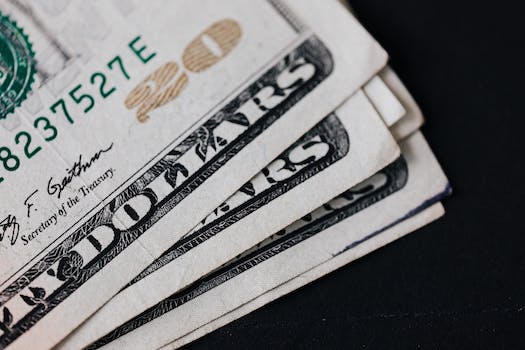

-
Table of Contents
Understanding the Credit Cycle: Unveiling the Money Circuit Theory of Capitalism.
Introduction
Understanding the credit cycle is crucial in comprehending the Money Circuit Theory of Capitalism. This theory explores the relationship between money, credit, and the overall functioning of the capitalist system. By delving into the credit cycle, we can gain insights into the cyclical nature of credit creation, expansion, and contraction, and how it impacts economic activity and financial stability. This introduction aims to provide a brief overview of the credit cycle within the Money Circuit Theory of Capitalism.
The Role of Credit in the Money Circuit Theory of Capitalism
Understanding the Credit Cycle in the Money Circuit Theory of Capitalism
The Role of Credit in the Money Circuit Theory of Capitalism
In the world of economics, credit plays a crucial role in the functioning of capitalism. It is a fundamental aspect of the money circuit theory, which seeks to explain the flow of money within an economy. Understanding the credit cycle is essential for comprehending the dynamics of capitalism and its impact on economic growth and stability.
At its core, the money circuit theory posits that money flows through various stages in the economy, starting with production, then distribution, and finally consumption. Credit, in this context, acts as a lubricant that facilitates the smooth operation of this circuit. It allows individuals and businesses to access funds that they can use to invest, produce, and consume.
The credit cycle refers to the cyclical pattern of credit expansion and contraction that occurs within an economy. It is influenced by a variety of factors, including interest rates, economic conditions, and government policies. Understanding the credit cycle is crucial because it has a significant impact on economic activity and financial stability.
During the expansion phase of the credit cycle, credit is readily available, and borrowing costs are relatively low. This encourages businesses and individuals to take on more debt, leading to increased investment and consumption. As a result, economic activity expands, and GDP grows. However, excessive credit expansion can also lead to asset bubbles and inflationary pressures.
The peak of the credit cycle is characterized by a period of euphoria and optimism. Borrowers may become overconfident and take on excessive debt, while lenders may relax their lending standards. This can lead to the accumulation of risky loans and the creation of financial imbalances. Eventually, these imbalances can become unsustainable, leading to the contraction phase of the credit cycle.
During the contraction phase, credit becomes less available, and borrowing costs rise. This can be triggered by a variety of factors, such as a tightening of monetary policy or a decline in economic conditions. As credit tightens, businesses and individuals may struggle to repay their debts, leading to defaults and bankruptcies. This, in turn, can lead to a decrease in investment and consumption, causing economic activity to contract.
The trough of the credit cycle is characterized by a period of pessimism and risk aversion. Lenders become more cautious, tightening their lending standards, and borrowers become more reluctant to take on debt. This can lead to a downward spiral, as reduced borrowing and spending further depress economic activity.
Understanding the credit cycle is crucial for policymakers and economists as it helps them anticipate and manage economic fluctuations. By monitoring the credit cycle, policymakers can implement measures to prevent excessive credit expansion or contraction, thereby promoting financial stability and sustainable economic growth.
In conclusion, credit plays a vital role in the money circuit theory of capitalism. It facilitates the flow of money through the various stages of production, distribution, and consumption. The credit cycle, with its phases of expansion and contraction, has a significant impact on economic activity and financial stability. Understanding the credit cycle is essential for policymakers and economists to effectively manage economic fluctuations and promote sustainable growth.
Exploring the Phases of the Credit Cycle in the Money Circuit Theory

Understanding the Credit Cycle in the Money Circuit Theory of Capitalism
Exploring the Phases of the Credit Cycle in the Money Circuit Theory
In the realm of economics, the credit cycle plays a crucial role in shaping the dynamics of capitalism. The Money Circuit Theory of Capitalism provides a framework for understanding how credit cycles operate and influence the overall functioning of the economy. By examining the various phases of the credit cycle, we can gain valuable insights into the patterns and trends that shape economic growth and contraction.
The credit cycle consists of four distinct phases: expansion, peak, contraction, and trough. Each phase represents a different stage in the overall credit cycle and has its own unique characteristics and implications for the economy.
The expansion phase marks the beginning of the credit cycle. During this phase, credit is readily available, and borrowing and lending activities increase. This leads to an expansion of economic activity as businesses and individuals take advantage of the easy access to credit. Investment and consumption rise, leading to increased production and employment. As a result, economic growth is stimulated, and the economy enters a period of expansion.
However, as the credit cycle progresses, the peak phase is reached. This phase represents the height of economic activity and credit expansion. At this stage, borrowing and lending reach their maximum levels, and the economy is operating at full capacity. The peak phase is characterized by high levels of investment, consumption, and employment. However, it is also a period of increasing financial risk as debt levels rise and speculative activities become more prevalent.
Following the peak phase, the credit cycle enters the contraction phase. During this phase, credit becomes less readily available, and borrowing and lending activities decline. This leads to a slowdown in economic activity as businesses and individuals reduce their spending and investment. As a result, production and employment levels decrease, leading to a contraction in the economy. The contraction phase is often accompanied by financial distress, as borrowers struggle to repay their debts and defaults become more common.
Finally, the credit cycle reaches its trough phase. This phase represents the bottom of the economic cycle, where economic activity is at its lowest point. Credit conditions are tight, and borrowing and lending activities are minimal. The trough phase is characterized by low levels of investment, consumption, and employment. However, it also sets the stage for the next expansion phase, as the economy begins to recover and credit conditions gradually improve.
Understanding the phases of the credit cycle is essential for policymakers, investors, and businesses alike. By recognizing the patterns and trends associated with each phase, stakeholders can make informed decisions and adjust their strategies accordingly. For example, during the expansion phase, businesses may choose to invest in new projects or expand their operations to take advantage of the favorable credit conditions. Conversely, during the contraction phase, businesses may adopt a more cautious approach and focus on reducing debt and improving their financial position.
In conclusion, the credit cycle is a fundamental aspect of the Money Circuit Theory of Capitalism. By examining the various phases of the credit cycle, we can gain valuable insights into the patterns and trends that shape economic growth and contraction. From the expansion phase to the trough phase, each stage has its own unique characteristics and implications for the economy. Understanding these phases is crucial for stakeholders to make informed decisions and navigate the complexities of the credit cycle.
Understanding the Implications of the Credit Cycle on Economic Stability
Understanding the Credit Cycle in the Money Circuit Theory of Capitalism
The credit cycle is a fundamental concept in the Money Circuit Theory of Capitalism. It refers to the cyclical pattern of credit expansion and contraction that occurs within an economy. This article aims to provide a comprehensive understanding of the credit cycle and its implications on economic stability.
To begin with, it is important to grasp the basic mechanics of the credit cycle. In a capitalist economy, credit plays a crucial role in facilitating economic activity. Banks and other financial institutions create credit by extending loans to individuals, businesses, and governments. This credit creation leads to an increase in spending and investment, which stimulates economic growth.
However, the credit cycle is not a smooth and continuous process. It is characterized by periods of expansion and contraction. During the expansion phase, credit is readily available, interest rates are low, and borrowing is encouraged. This leads to increased investment, consumption, and economic activity. As a result, asset prices rise, and confidence in the economy grows.
Eventually, this expansion reaches its peak, and the economy starts to show signs of overheating. Inflationary pressures build up, and the central bank responds by raising interest rates to curb excessive borrowing and spending. This marks the beginning of the contraction phase of the credit cycle.
During the contraction phase, credit becomes less accessible and more expensive. Banks become cautious in lending, and borrowers find it harder to obtain credit. This leads to a decrease in spending and investment, which slows down economic growth. Asset prices start to decline, and confidence in the economy wanes.
The contraction phase can be further exacerbated by a phenomenon known as the debt-deflation spiral. As asset prices fall, borrowers' net worth decreases, making it harder for them to repay their debts. This leads to defaults and bankruptcies, which further depresses asset prices and creates a downward spiral of economic contraction.
Understanding the implications of the credit cycle on economic stability is crucial. The expansion phase of the credit cycle can fuel excessive risk-taking and speculative behavior. As credit becomes readily available, borrowers may take on more debt than they can handle, leading to financial instability. This was evident during the global financial crisis of 2008, where the excessive expansion of credit and the subsequent bursting of the housing bubble led to a severe economic downturn.
On the other hand, the contraction phase of the credit cycle can also have detrimental effects on the economy. As credit becomes scarce, businesses struggle to obtain financing for investment and expansion. This can lead to a decline in productivity and job losses. Moreover, the debt-deflation spiral can amplify the contraction, causing a prolonged period of economic stagnation.
Policymakers play a crucial role in managing the credit cycle and maintaining economic stability. Central banks use monetary policy tools, such as interest rate adjustments and open market operations, to influence the availability and cost of credit. By carefully managing the credit cycle, policymakers aim to prevent excessive booms and busts and maintain a stable and sustainable economic environment.
In conclusion, the credit cycle is a fundamental concept in the Money Circuit Theory of Capitalism. It encompasses the cyclical pattern of credit expansion and contraction within an economy. Understanding the implications of the credit cycle on economic stability is crucial for policymakers and individuals alike. By managing the credit cycle effectively, policymakers can mitigate the risks of financial instability and promote sustainable economic growth.
Q&A
1. What is the credit cycle in the Money Circuit Theory of Capitalism?
The credit cycle refers to the pattern of expansion and contraction in credit availability and borrowing within an economy, as described by the Money Circuit Theory of Capitalism.
2. How does the credit cycle impact the economy?
The credit cycle has a significant impact on the economy as it influences investment, consumption, and overall economic activity. During the expansion phase, increased credit availability stimulates economic growth, while the contraction phase can lead to reduced borrowing, decreased investment, and economic downturns.
3. What factors contribute to the credit cycle?
Several factors contribute to the credit cycle, including changes in interest rates, lending standards, and overall economic conditions. Additionally, market sentiment, investor behavior, and government policies can also influence the credit cycle.
Conclusion
In conclusion, the Money Circuit Theory of Capitalism provides a comprehensive framework for understanding the credit cycle. It emphasizes the role of money and credit in driving economic fluctuations and highlights the interconnectedness between the financial sector and the real economy. By analyzing the various stages of the credit cycle, such as expansion, crisis, and contraction, this theory offers insights into the dynamics of credit creation, investment, and debt accumulation. Understanding the credit cycle within the Money Circuit Theory of Capitalism can help policymakers, economists, and investors better comprehend the causes and consequences of credit booms and busts, and potentially inform more effective measures to mitigate the negative impacts of financial instability.












